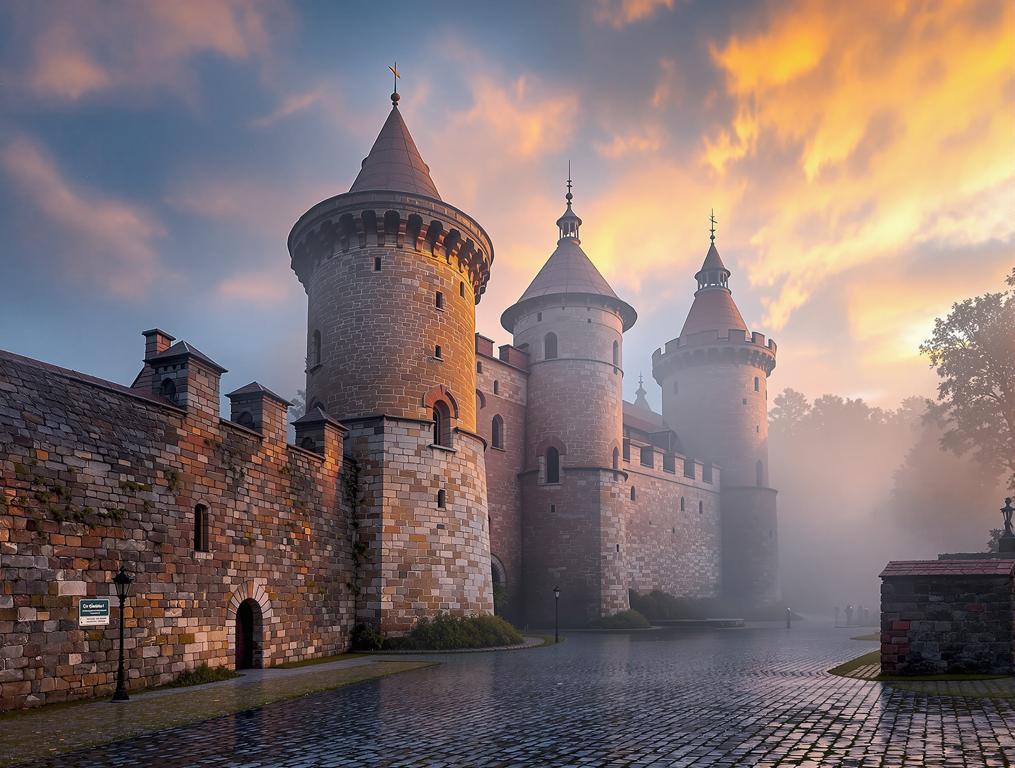The medieval spires of Cēsis Castle pierce through morning mist as I wander the nearly empty 13th-century cobblestone streets. It’s 7:30 AM, and this Latvian town of 14,699 residents is just stirring to life. Standing at the entrance to what locals call the “Suicide Castle,” I’m struck by the disconnect – how could such a charming place harbor one of Europe’s most tragic medieval legends? The castle guide isn’t due for another hour, but a weathered plaque hints at the darkness beneath this Baltic beauty: in 1577, over 300 castle defenders committed mass suicide rather than surrender to Russian forces.
The tragic legend of 300+ medieval suicides that tourists never hear about
This isn’t just another pretty European castle. When Ivan the Terrible’s forces besieged Cēsis in 1577, the Livonian knights and local families made an unthinkable choice. Rather than face capture, more than 300 inhabitants gathered in the castle’s powder room.
“They blew themselves up,” whispers my guide Anete, who arrived early after spotting me through the castle window. “Women, children, soldiers – all together.” She unlocks a small side chamber not typically on the morning tour, revealing blackened stone walls and a simple memorial plaque.
Unlike medieval French towns offering authentic experiences without crowds, Cēsis adds a layer of dark historical immersion. The mass suicide is documented in regional archives, yet remains largely unknown to international travelers.
Sarah, my photographer wife, captures the morning light filtering through arrow slits where defenders once watched Russian troops approach. What strikes me most is how this pivotal moment of Baltic history sits quietly in the shadow of Europe’s more marketed medieval destinations.
Why Cēsis Castle hides darker history than crowded European destinations
Most visitors flock to Český Krumlov in the Czech Republic, with its 2 million annual tourists. Meanwhile, Cēsis sees perhaps a tenth of that number, despite housing what many historians consider a more significant medieval fortress with a far more compelling human story.
“We don’t want to be another Český Krumlov. The mass suicide story isn’t something we market heavily – it deserves respect, not commercialization. People discover it when they’re ready to understand our complex history.”
The castle itself spans 2.7 hectares, with walls dating back to 1209. Unlike France’s perfect octagon fortress that revolutionized military design, Cēsis represents earlier medieval defensive architecture with its tragic human dimension.
Inside the western tower, stone stairs wind past chambers where nobles once feasted. Now, historical exhibits reveal the complex layers of Latvian, German, and Russian influences that shaped this borderland town. The artifacts feel more intimate than those in larger European museums – handwritten letters from doomed castle defenders, children’s toys excavated from medieval living quarters.
How Latvia’s 2025 Capital of Culture candidate preserves authentic medieval experiences
As a European Capital of Culture candidate, Cēsis balances preservation with accessibility. The town offers candlelit evening tours where visitors navigate castle ruins by authentic beeswax lanterns – a stark contrast to the floodlit spectacles at more commercial destinations.
Unlike Scottish villages that completely vanished from maps, Cēsis has maintained its historical integrity while evolving. The Burning Conscience Museum, housed in a former Soviet prison, completes the timeline from medieval tragedy to 20th-century occupation.
Local artisans practice medieval crafts with techniques verified by archaeological findings. In one workshop near the castle, I watch as Kārlis forges iron using 13th-century methods. “We learn from the past,” he explains, hammering a glowing rod, “both the beautiful and the terrible parts.”
What the guidebooks won’t tell you
Visit before 9:00 AM to experience the castle grounds alone – official tours start at 10:00, but early risers can often arrange private access through your hotel. The best views come from Rožu Square at sunset, when the castle stones glow amber.
For the most authentic experience, time your visit around the Medieval Festival in July. In 2025, the festival will feature expanded reenactments of daily medieval life rather than focusing solely on knights and battles.
Access Cēsis easily by train from Riga (90 minutes), with departures every two hours. Stay in the old town’s Hotel Cēsis for rooms with castle views and walking access to all major sites.
Standing on the castle’s eastern rampart as the morning mist burns away, I can’t help but feel the weight of the choices made within these walls. Emma, my daughter, would call this a “sad-beautiful place” – her term for destinations that move you with both tragedy and beauty. Perhaps that’s Cēsis’ true power: it doesn’t just preserve medieval stones, but the human stories that give them meaning.
